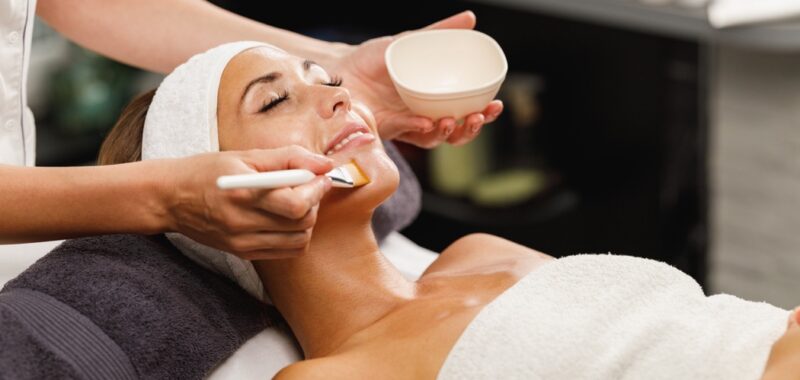Addressing attendees at this year’s in-cosmetics 2025 tradeshow in Amsterdam earlier this month, a panel of medicine, dermatology and science experts sat down to brainstorm dermocosmetics. And one of the biggest focuses, according to the panel, was the need to invest more heavily in science and education.
Information, information, misinformation
“You see a lot of misinformation, and that’s a big issue, especially in the aesthetic cosmetic industry,” said Carine Blondin, head of dermocosmetics at Swiss aesthetic medicine specialist Teoxane SA.
“Basically, we need to inform. So, at Teoxane, we have a big department responsible for informing doctors and patients about the quality of the formulations. And it’s not only about our products – we want to reinforce education,” Blondin said.
Consumers and patients had to be better informed about different molecules and different doses used in dermocosmetic products, even for well-known ingredients like hyaluronic acid (HA), she explained. “This is where we need to have a responsibility (…) We have a responsibility to give good, solid data to the patient so they can make informed decisions.”
Romun Leaovitavat, dermatologist and medical consultant at Medico Wellness Co., agreed, noting this responsibility was even more important as dermocosmetics innovation and consumer interest boomed. “In this kind of industry, we are moving so fast, I cannot even catch up – there is too much information,” Leaovitavat said.
But there was also plenty of misinformation out there, he said, particularly across the likes of TikTok and other social media channels. And cutting through this noise was difficult, particularly given how many consumers held online influencers in equal regard to dermatologists, doctors and derma brands, he said.
Good science versus bad science
Dr. Kristin Neumann, co-founder and CSO of microbiome testing specialist MyMicrobiome AG, said dermocosmetics was currently “the Wild West” in information terms, with good and bad science becoming increasingly “hard to distinguish.”
Moving forward, Neumann said dermocosmetic brands should work to publish scientific findings in a clear and visible way, showcasing results wheverer possible, to rise above brands claiming the same without the data. She told Premium Beauty News marketeers and scientists had to join forces in-house to truly succeed with accurate scientific messaging. “This is, I think, what is distinguishing the good brands from the brands that will fail in the future.”
The push for more science-backed marketing also aligned with what consumers were looking for, Neumann said. “The customer today is very, very science-driven. They want to see science behind the claims; they want to see the data, and I think that’s a really good thing and it’s forcing the brands to do their homework.”
Blondin agreed but said there were only a few dermocosmetic companies investing in quality clinical studies like in vitro and in vivo double-blinded randomized studies to back up claims, and this had to change. The professional skincare industry, she said, had to differentiate itself from the rest of skincare with these sorts of studies, because there were plenty of brands over-claiming on formulations. “It’s too easy to manipulate the data to make beautiful claims that ultimately are not really reflecting what your product can do.”
Brian Freedman, senior director for strategic marketing and regional director for North America at biotech firm Evolved by Nature, agreed: “Clinicals are obviously necessary. Without the clinical studies we don’t have the claims.”
But Freedman said it was key for a brand and marketing “layer” to be added to the science, to help consumers understand what the product really offered. “We as marketers create buzzwords to do that (…) From a brand and marketing point of view, it’s our role to tell the consumers what we stand for.”
Safety, efficacy and/or results?
However, Leaovitavat said there was a clear disconnect between what consumers wanted and prioritized in dermocosmetics versus what was available, with consumers largely still prioritizing quick results whilst industry remained focused on safety and efficacy instead.
Blondin agreed: “Somehow, we have a conflict about what consumers and patients want on outcome and what dermatologists are willing to prescribe and also what companies are willing to test.”
Companies, therefore, must work to try and close that gap moving forward, she said. “We need to find a way for consumers to feel the products are effective, that we have the data to back that up, but also for dermatologists to feel these products could be as effective as other prescribed products. If you look at the clinical data dermocosmetic brands are using, most of the time they are very weak.”
Neumann agreed: “We need to find a balance between having activity, meaning the consumer is satisfied, but also serve that younger generation and push them to think about long-term health.”
“…On the one hand, we need products that work, but they still need to take into account the holistical view of health, because the basis for good skin is healthy skin,” she said.
Looking ahead, therefore, it would be key research, development and labelling efforts stayed focused on concentrations in product formulas, Neumann said, to help consumers and practioners identify the most relevant products for particular needs and skin types.
Laure Peslerbe, product development and clinical studies manager at Teoxane SA, said it would also be important to continue clinical studies with the view that products could be considered suitable for sensitive skin, to get the “perfect balance between efficacy and safety.”
In the future, Leaovitavat said it might be that labels and certifications were developed to help consumers and dermatologists more easily identify relevant, safe and high quality products.

